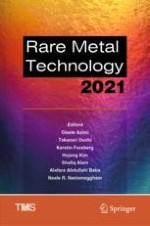This collection presents papers from a symposium on extraction of rare metals as well as rare extraction processing techniques used in metal production. It covers metals essential for critical modern technologies including electronics, electric motors, generators, energy storage systems, and specialty alloys. Rare metals are the main building blocks of many emerging critical technologies and have been receiving significant attention in recent years. Much research in academia and industry is devoted to finding novel techniques to extract critical and rare metals from primary and secondary sources. The technologies that rely on critical metals are dominating the world, and finding a way to extract and supply them effectively is highly desirable and beneficial. Rapid development of these technologies entails fast advancement of the resource and processing industry for their building materials. Authors from academia and industry exchange knowledge on developing, operating, and advancing extractive and processing technologies. Contributions cover rare-earth elements (magnets, catalysts, phosphors, and others), energy storage materials (lithium, cobalt, vanadium, graphite), alloy elements (scandium, niobium, titanium), and materials for electronics (gallium, germanium, indium, gold, silver). The contributions also cover various processing techniques in mineral beneficiation, hydrometallurgy, separation and purification, pyrometallurgy, electrometallurgy, supercritical fluid extraction, and recycling (batteries, magnets, electrical and electronic equipment).
